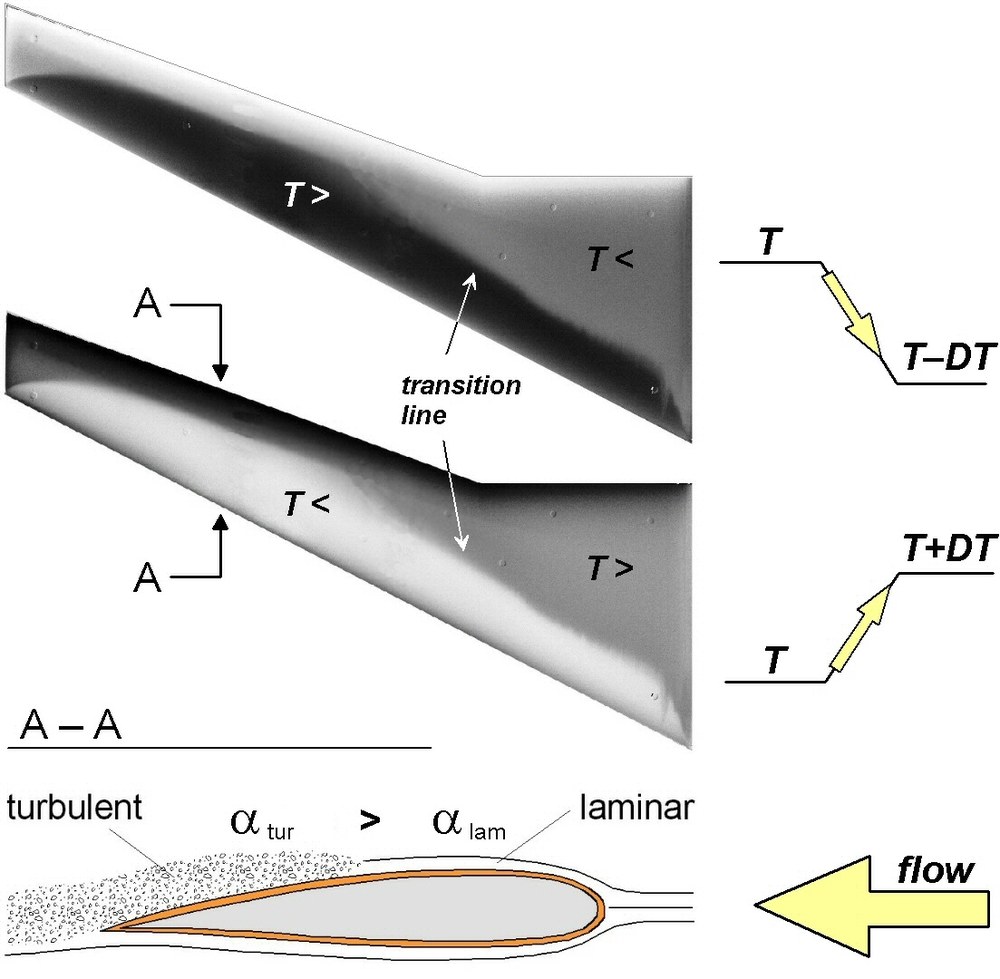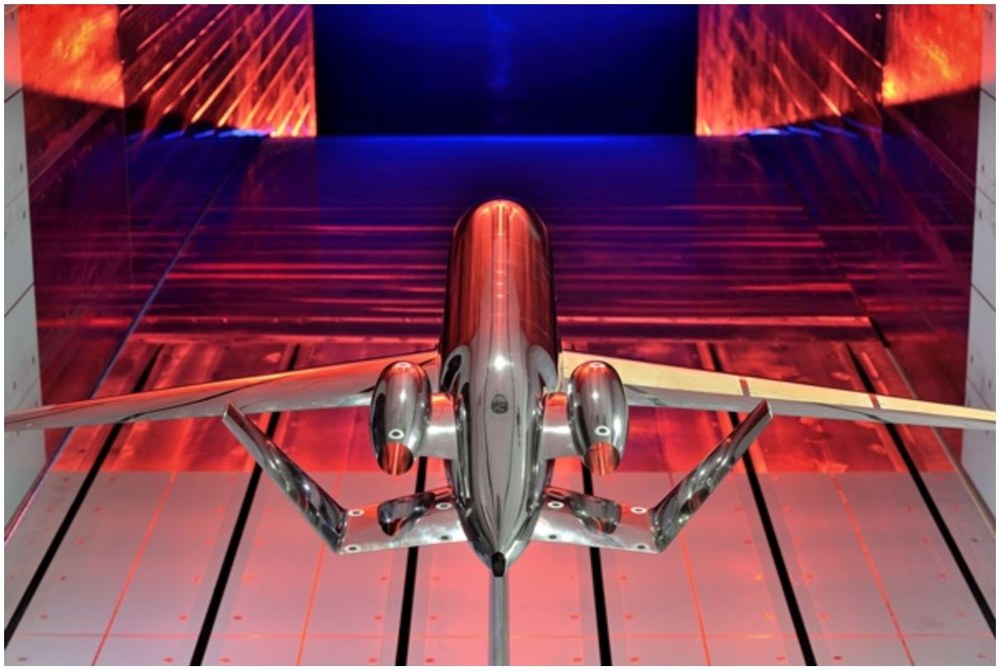Temperature Sensitive Paint (TSP)
Surface temperature distributions and heat transfer on test bodies can be determined with the help of temperature sensitive paint (TSP), which is a well known method for two-dimensional temperature measurement. A specific measurement technique based on the use of TSP enables us to visualize the laminar-to-turbulent boundary-layer transition on wind tunnel models. This is of great interest for high Reynolds number wind tunnel testing which is nowadays mostly carried out in modern, cryogenic wind tunnels like the European-Transonic Windtunnel (ETW). Transition detection by means of TSP has been used with great success by the Institute of Aerodynamics and Flow Technology since the beginning of 2003. Further application fields of TSP are surface temperature measurements in general as an alternative to IR cameras or in areas where the IR camera technique can not be used.


Cryogenic wind tunnels such as the European-Transonic Windtunnel (ETW) can be cooled down by liquid nitrogen to temperatures as low as 100 K. At this rather low temperature, the standard IR technique no longer works.
With the help of the temperature senitive paint (TSP) technique, the laminar-to-turbulent boundary-layer transition on wind tunnel models can nevertheless be detected. To visualize laminar and turbulent regions on a TSP painted surface, the method of temperature steps can be used: the oncoming flow is heated or cooled with respect to the model and the temperature change in the fluid is transfered faster to the painted surface in areas where the boundary layer is turbulent. This is caused by the different heat transfer coefficients in the turbulent and laminar boundary layers. Hence, the transition line occurs as a borderline between dark and light areas of a TSP image taken during the step change. In addition, methods like heating the model can be used to establish a temperature difference between flow and model.
The working principle of TSP is based on the thermal quenching mechanism of molecules which are embedded in the paint. These so-called luminophores are excited by incident light of a certain wavelength (for example UV or blue light) which sends the molecules to an excited state. Subsequently the excited molecules drop back to the ground state by emission of light of a longer wavelength (for example red). In addition to that, there exists a process of deactivation without light emission whose rate is dependent on the heat content of the paint. The higher the temperature of TSP, the more molecules drop back without light emission and the paint appears darker in comparison to colder regions.
The TSP-paint used by our institute for transition detection in cryogenic testing was developed by the Japanese Aerospace Exploration Agency (JAXA) and is optimized for large, industry-scale wind tunnels. The DLR Institute of Aerodynamics and Flow Technology continously improves the TSP technique and develops new paints for other applications as well.
Applications
- Temperature determination for surfaces in wind tunnels in the following areas:
- Aeronautics
- Transport
- Propulsion technology
- Energy
- Measurement of unsteady effects
- Transition detection (determination of the transition from laminar to turbulent boundary layer)

General data
- DLR Göttingen
- Opening2006
- Method: Temperature-sensitive paint (TSP): optical technique for non-contact temperature measurements using the temperature-dependent luminescence of dyes
Technical data
- Calibration chamber for pressure (1 - 300 kPa) and temperature (100 – 380 K)
- Spectrometer to analyse surfaces and optical filters (300 - 800 nm)
- CCD cameras and CMOS cameras
- High-speed cameras (50 Hz – 120 kHz)
- High-power light sources (lasers, discharge lamps, LED systems)
- Laboratories for sensor application and analysis
- mobile system
Project highlights
- VICTORIA - (Virtual Aircraft Technology Integration Platform, DLR)
Goal: further development of the TSP/PSP measurement method in order to determine the relative wall shear stress - ReSK (Reynoldszahleffekte und Strömungskontrolle, LuFo V-2)
Goal: extended understanding of Reynolds number effects and the potential of flow control as well as investigations and validations with regard to increased performance by means of laminar flows and boundary layer development - BINCOLA (Evaluation of the Benefits of innovative Concepts of laminar nacelle and HTP installed on a business jet configuration)
Cooperations
- FH Münster
- Office National d'Etudes et de Recherches Aérospatiales (ONERA)
- Japan Aerospace Exploration Agency (JAXA)
- National Research Council Canada (NRC)
- Tohoku University
- Deutsch-Niederländische Windkanäle (DNW)
- European Transonic Windtunnel (ETW)
